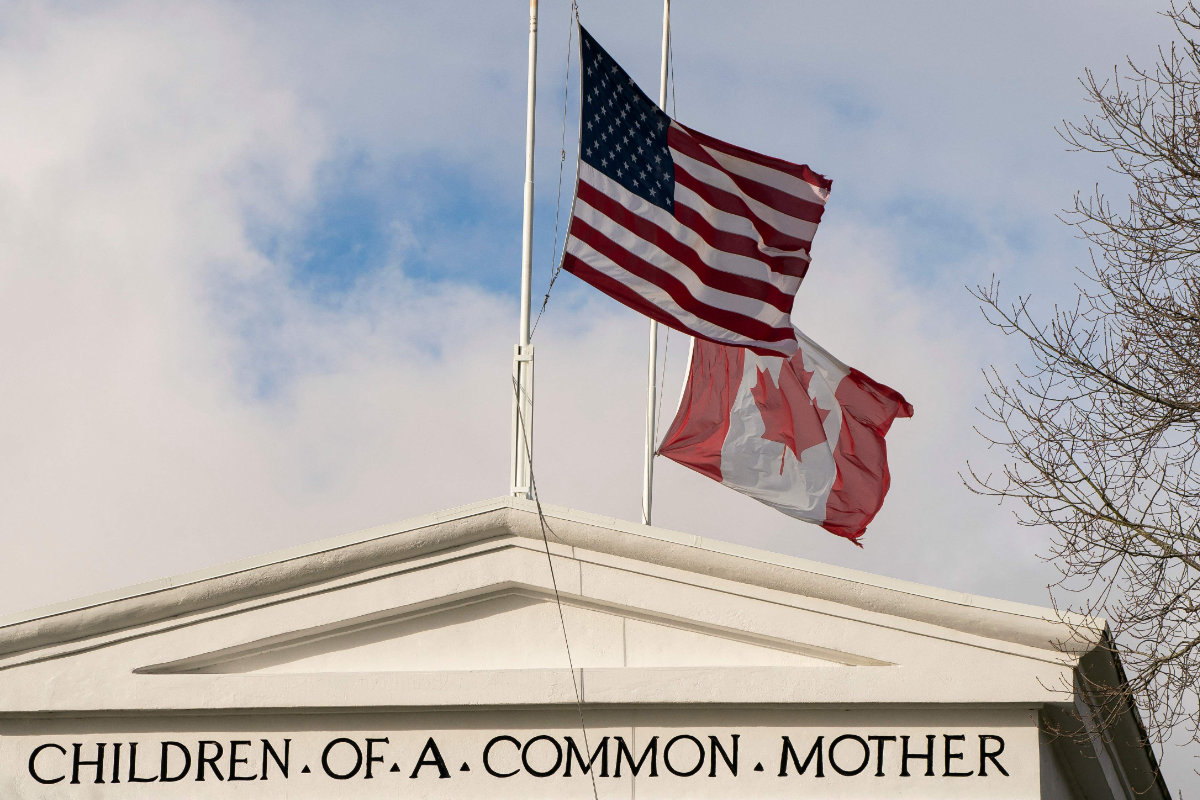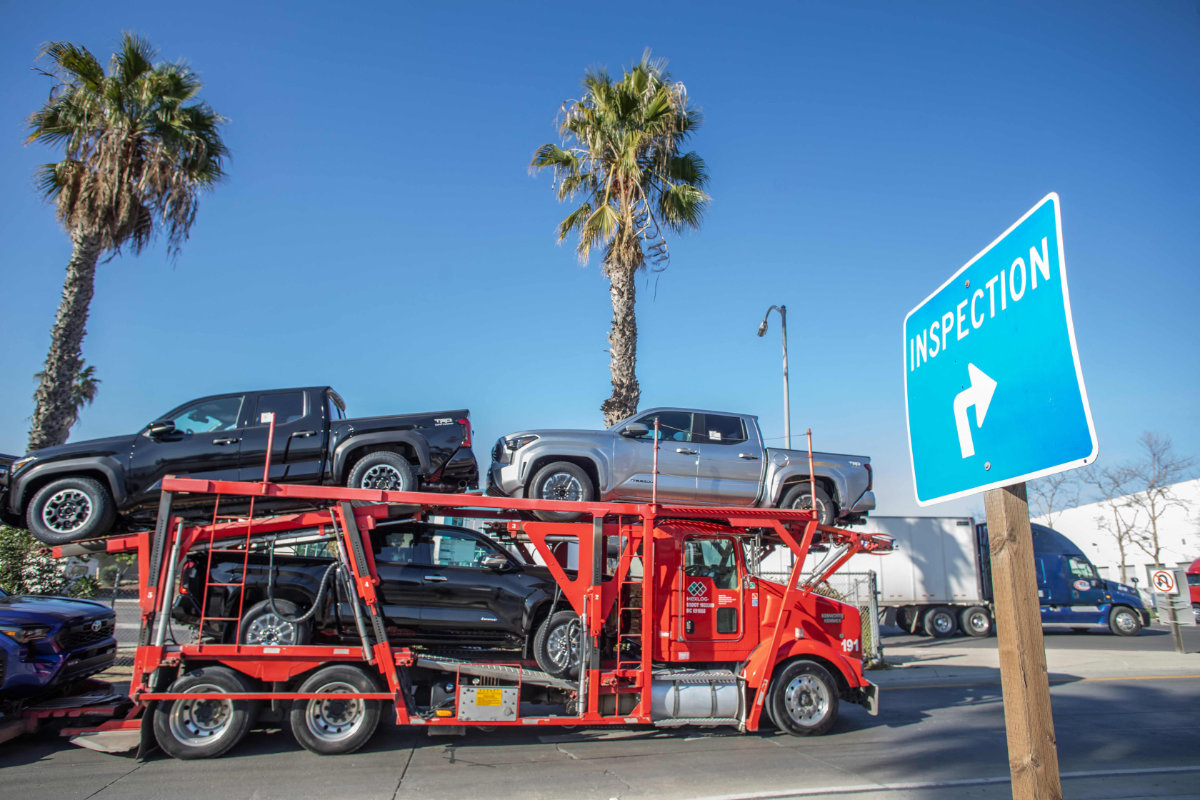WASHINGTON: Donald Trump was sworn in as the 47th president Monday, returning to power with a promise to end America’s decline and to “completely and totally reverse” the actions of the man who drove him from office four years ago.
Trump overcame impeachments, criminal indictments and a pair of assassination attempts to win another term in the White House, and he planned to act swiftly after the ceremony. Dozens of executive orders were prepared for his signature to clamp down on border crossings, increase fossil fuel development and end diversity and inclusion programs across the federal government.
The orders from the incoming Republican president will begin the process of unraveling the Democratic agenda of Joe Biden, whose term ended at noon, moments before Trump took the oath of office.
Declaring that government faces a “crisis of trust,” Trump said in his inaugural address that under his administration, “our sovereignty will be reclaimed. Our safety will be restored. The scales of justice will be rebalanced.”
Trump claimed “a mandate to completely and totally reverse a horrible betrayal,” promising to “give the people back their faith, their wealth, their democracy and indeed their freedom.”
“From this moment on,” he added as Biden watched from the front row, “America’s decline is over.”
The executive orders are the first step in what Trump calls “the complete restoration of America and the revolution of common sense.”
Other goals will prove more difficult, perhaps testing the patience of supporters who were promised quick success. Trump has talked about lowering prices after years of inflation, but his plans for tariffs on imports from foreign countries could have the opposite effect.
Frigid weather rewrote the pageantry of the day. Trump’s swearing-in was moved indoors to the Capitol Rotunda — the first time that has happened in 40 years — and the inaugural parade was replaced by an event at a downtown arena. Trump supporters who descended on the city to watch the ceremony outside the Capitol from the National Mall were left to find other places to view the festivities.
At the Capitol, Vice President JD Vance was sworn in first, taking the oath read by Supreme Court Justice Brett Kavanaugh on a Bible given to him by his great-grandmother. Trump followed moments after noon, using both a family Bible and the one used by President Abraham Lincoln at his 1861 inauguration as Chief Justice John Roberts administered his oath.
A cadre of billionaires and tech titans — including Mark Zuckerberg, Jeff Bezos, Tim Cook and Sundar Pichai — were given prominent positions in the Capitol Rotunda, mingling with Trump’s incoming team before the ceremony began. Also there was Elon Musk, the world’s richest man, who is expected to lead an effort to slash spending and federal employees.
Stopping at the White House on their way to the Capitol, Trump and his wife, Melania, were greeted by Biden and first lady Jill Biden for the customary tea and coffee reception. It was a stark departure from four years ago, when Trump refused to acknowledge Biden’s victory or attend his inauguration.
“Welcome home,” Biden said to Trump after the president-elect stepped out of the car. The two presidents, who have spent years bitterly criticizing each other, shared a limo to the Capitol. After the ceremony, Trump walked with Biden to the building’s east side, where Biden departed via helicopter to begin his post-presidential life.
Trump followed Biden’s departure with freewheeling remarks to supporters, revisiting a litany of conspiracy theories about voter fraud and grievances against perceived enemies such as former Republican Rep. Liz Cheney, whom he called “a crying lunatic.”
He spoke for even longer than in his inaugural address, saying, “I think this is a better speech than the one I gave upstairs.”
Trump’s inauguration realized a political comeback without precedent in American history. Four years ago, he was voted out of the White House during an economic collapse caused by the deadly COVID-19 pandemic. Trump denied his defeat and tried to cling to power. He directed his supporters to march on the Capitol while lawmakers were certifying the election results, sparking a riot that interrupted the country’s tradition of the peaceful transfer of power.
But Trump never lost his grip on the Republican Party and was undeterred by criminal cases and two assassination attempts as he steamrolled rivals and harnessed voters’ exasperation with inflation and illegal immigration.
Trump used his inaugural address to repeat his claims that he was targeted by political prosecutions, and he promised to begin “fair, equal and impartial justice.” He also acknowledged that he was taking office on Martin Luther King Jr. Day, which honors the slain civil rights hero. “We will strive together to make his dream a reality,” he said.
Now Trump is the first person convicted of a felony — for falsifying business records related to hush money payments — to serve as president. He pledged to “preserve, protect and defend” the Constitution from the same spot that was overrun by his supporters on Jan. 6, 2021. He’s said that one of his first acts in office will be to pardon many of those who participated in the riot, and he referred to them as “hostages” on Monday.
“It’s action, not words, that count, and you’re going to see a lot of action,” Trump said.
Eight years after he first entered the White House as a political newcomer, Trump is far more familiar with the operations of federal government and emboldened to bend it to his vision. Trump wants to bring quick change by curtailing immigration, enacting tariffs on imports and rolling back Democrats’ climate and social initiatives.
He has also promised retribution against his political opponents and critics, and placed personal loyalty as a prime qualification for appointments to his administration.
With minutes to go before leaving office, Biden issued preemptive pardons to his siblings and their spouses to shield them from the possibility of prosecution. Earlier in the day, he also pardoned current and former government officials who have been the target of Trump’s anger. Biden said “these are exceptional circumstances, and I cannot in good conscience do nothing.”
Trump has pledged to go further and move faster in enacting his agenda than during his first term, and already the country’s political, business and technology leaders have realigned themselves to accommodate him.
Democrats who once formed a “resistance” are now divided over whether to work with Trump or defy him. Billionaires have lined up to meet with Trump as they acknowledge his unrivaled power in Washington and his ability to wield the levers of government to help or hurt their interests.
Long skeptical of American alliances, Trump’s “America First” foreign policy is being watched warily at home and abroad as Russia’s invasion of Ukraine will soon enter its third year, and a fragile ceasefire appears to be holding in Gaza after more than 15 months of war between Israel and Hamas. Trump, who had promised to end the Ukraine war even before he was sworn-in, did not mention the conflict in his inaugural address.
Trump said he would lead a government that “expands our territory,” a reference to his goals of acquiring Greenland from Denmark and restoring US control of the Panama Canal.
He also said he would “pursue our manifest destiny into the stars” by launching American astronauts to Mars. Musk, the owner of a space rocket company with billions of dollars in federal contracts, cheered and pumped his arms above his head as Trump spoke.
Trump plans to crack down on the US southern border with a playbook that’s similar to his first term — declaring a national emergency, limiting the number of refugees entering the US and deploying the military.
He’s also expected to try to end birthright citizenship automatically bestowed on people born in the US and to end diversity, equity and inclusion programs in the federal government.































